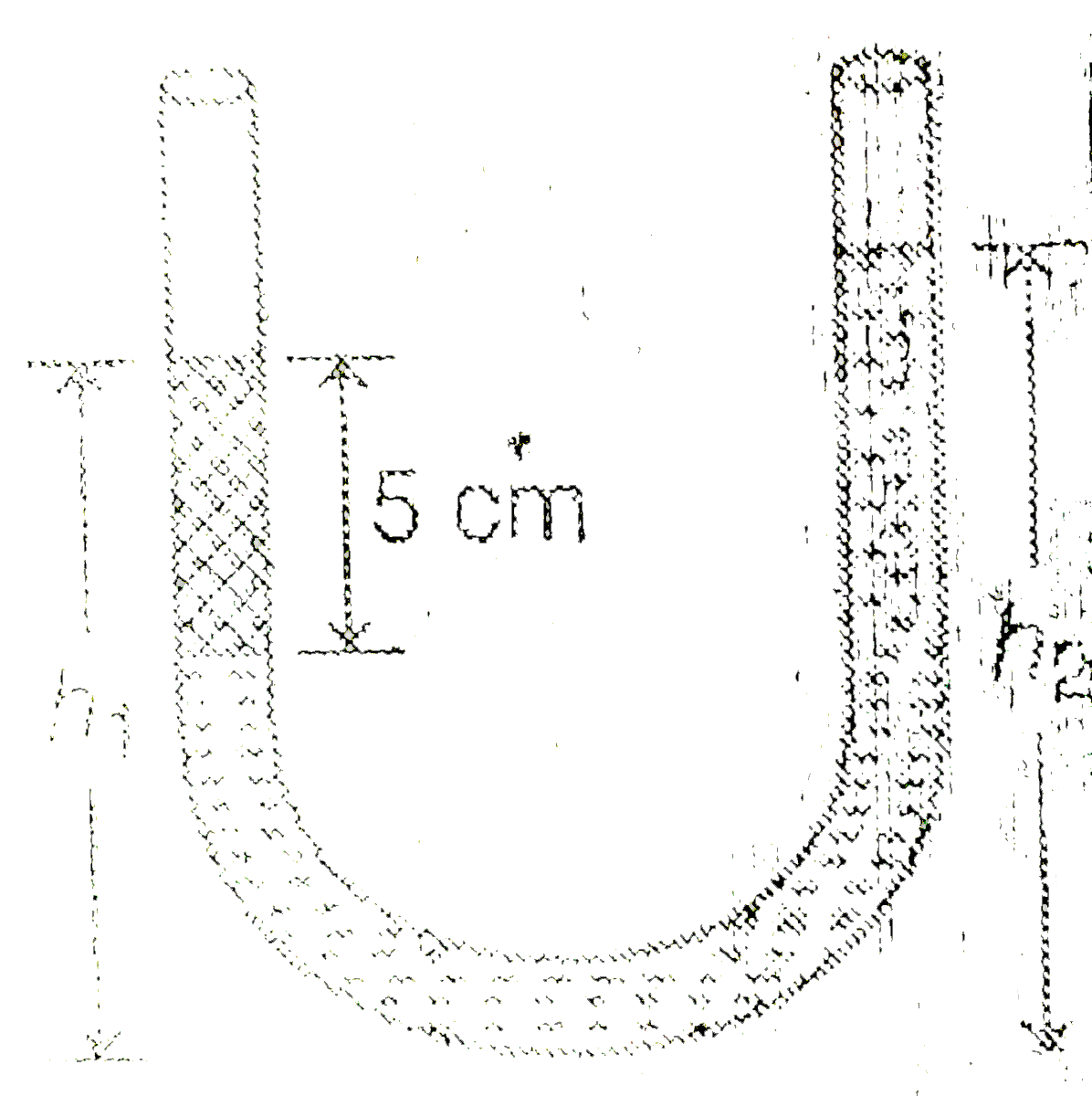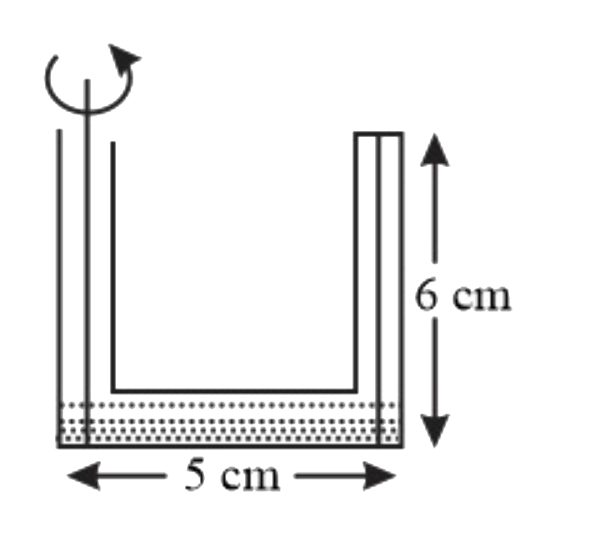_S01_015_Q01.png)
A vertical U-tube of uniform cross-section contains mercury in both arms A glycerine (relative density =1.3) column of length 10 cm is introduced into one of the arms. Oil of density 800 gm m−3 is poured into the other arm until the upper surface of the oil and hlycerine are at the same horizontal level, find the length of the column. Density of mercury is 13.6×103kgm−3
Pressure at A and B must be same
Pressure A =P0+0.1×(1.3×1000)×g
Pressure at B=P0+h×800×g+(0.1−h)×13.6×1000g
⇒0.1×1300=800h+(0.1−h)×13600
⇒h=0.096m=9.6cm
Topper's Solved these Questions
- ELASTICITY, SURFACE TENSION AND FLUID MECHANICSBOOK - ALLENCHAPTER - ELASTICITY, SURFACE TENSION AND FLUID MECHANICSEXERCISE - Exercise 1 (Elasticity)
16 Videos
- ELASTICITY, SURFACE TENSION AND FLUID MECHANICSBOOK - ALLENCHAPTER - ELASTICITY, SURFACE TENSION AND FLUID MECHANICSEXERCISE - Exercise 1 (Surface Tension)
21 Videos
- CENTRE OF MASSBOOK - ALLENCHAPTER - CENTRE OF MASSEXERCISE - EXERCISE-V B
19 Videos
- ERROR AND MEASUREMENTBOOK - ALLENCHAPTER - ERROR AND MEASUREMENTEXERCISE - Part-2(Exercise-2)(B)
22 Videos
Similar Questions
A vertical U-tube of uniform cross-section contains water jn both the arms. A 10 cm glycerine column (R.D. = 1.2) is added to one of the limbs. The level difference between the two free surfaces in the two limbs wiil be
View SolutionCalculate the height of a water column which will exert on its base the same pressure as the 70 cm column of mercury. Density of mercury is 13.6g cm−3
View Solution
Knowledge Check
Torricelli's barometer used mercury but pascal duplicated it using French wine of density 984kgm−3 . In that case, the height of the wine column for normal atmospheric pressure is
(Take the density of mercury =1.36×103kgm−3)A5.5 mB10.5 mC9.8 mD15 m
A vertical U shaped tube of uniform cross-section contains mercury in both limbs. Another liquid of density 3.4gcm3 is poured In one limb of column length 4 cm as shown in figure. Then difference (h) between the upper level of liquid in both the limbs is (densityofmercury=13.6gcm3)
View SolutionAn open -ended U-tube of uniform cross-sectional area contains water (density 1.0g/cm23) standing initially 20 cm from the bottom in each arm. An immiscible liquid of density 4.0g/cm2 is added to one arm until a layer 5 cm high forms, as shown in the figure above. What is the ratio h2/h1 of the heights of the liquid in the two arms ?

View SolutionA wire of radius 10−3m and length 2m is stretched by a force of 50 N. Calculate the fundamental frequency of the note emitted by it. Density of wire is 1.6.×103 kg m−3.
View SolutionThe pressure inside a soap bubble of radius 1 cm balances a 1.5 mm column of oil of density 800 kgm−3. Find the surface tension of the soap solution.
View SolutionIf 15.0 cm of water and spirit each are further poured into the respective arms of the tube, what is the difference in the levels of mercury in the two arms? (Relative density of mercury = 13.6).
View SolutionA liquid X of density 3.36g/cm3 poured in a U-tube which contains Hg. Another liquid Y is poured in left arm with heght 8 cm upper levels of X and Y are same. What is density of Y?
View SolutionLength of the horizontal arm of a uniform cross - section U - tube is l = 5 cm and both ends of the vertical arms are open to the surrounding pressure of 7700 N m−2. A liquid of density ρ=103 kg m−3 is poured into the tube such that the liquid just fills the horizontal part of the tube. Now, one of the open ends is sealed and the tube. Now, one of the open ends is sealed and the tube is then rotaed about a vertical axis passing through the other veritcal arm with angular velocity ω due to which the liquid rises up to half the length of the vertical arm. If length of each vertical arm is a = 6 cm. What is the value of ω(in rad s−1)?

View Solution
